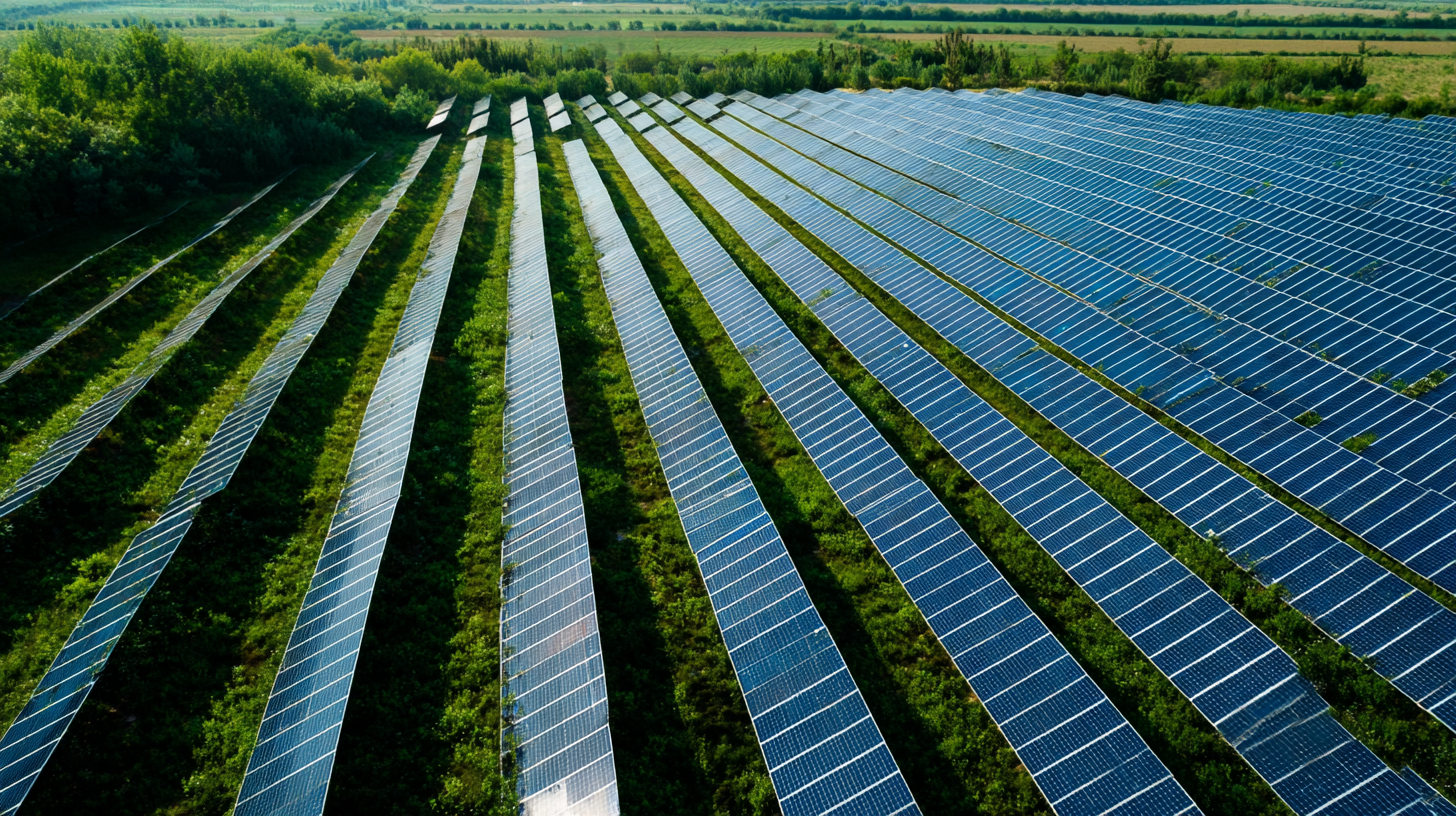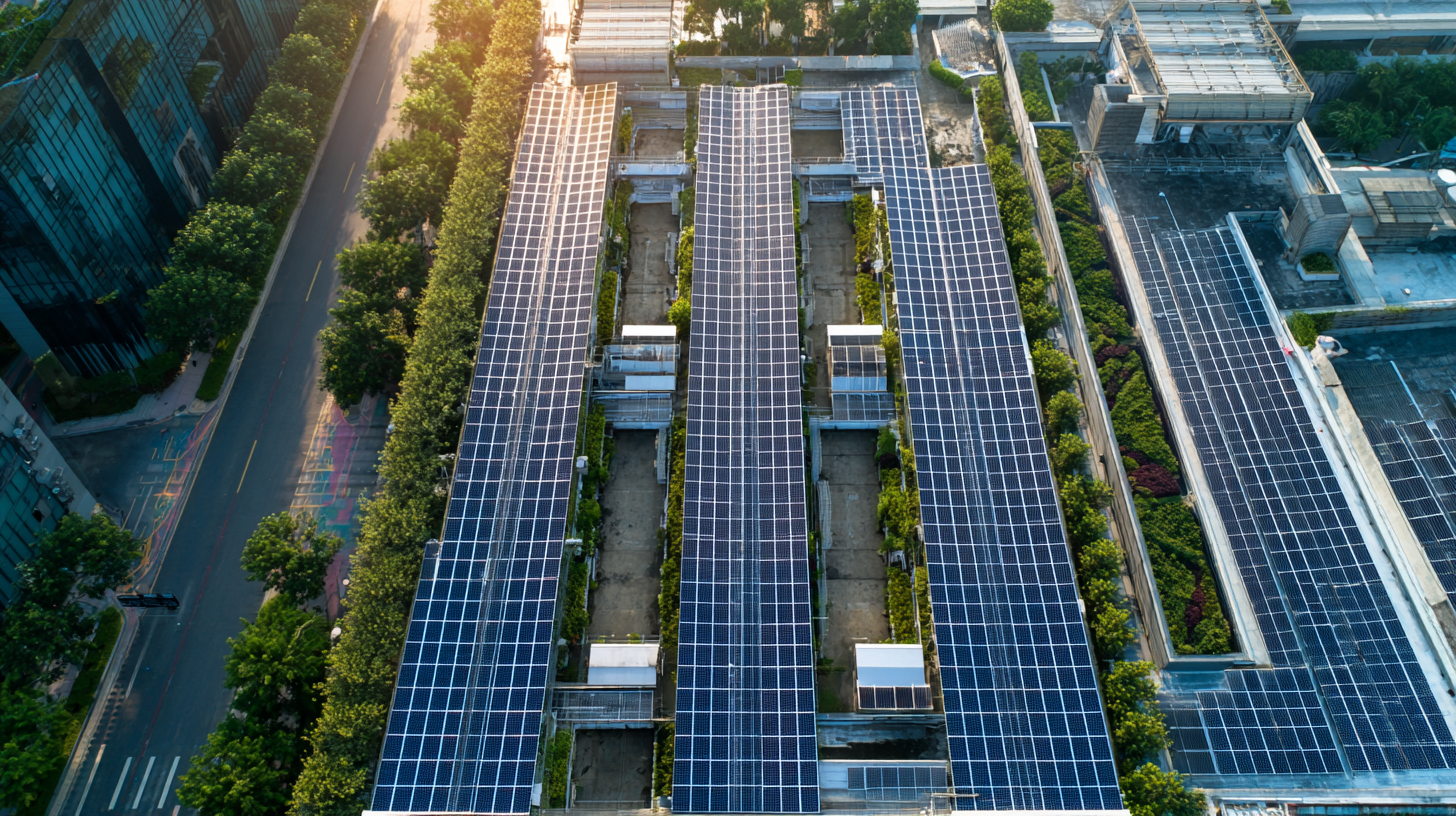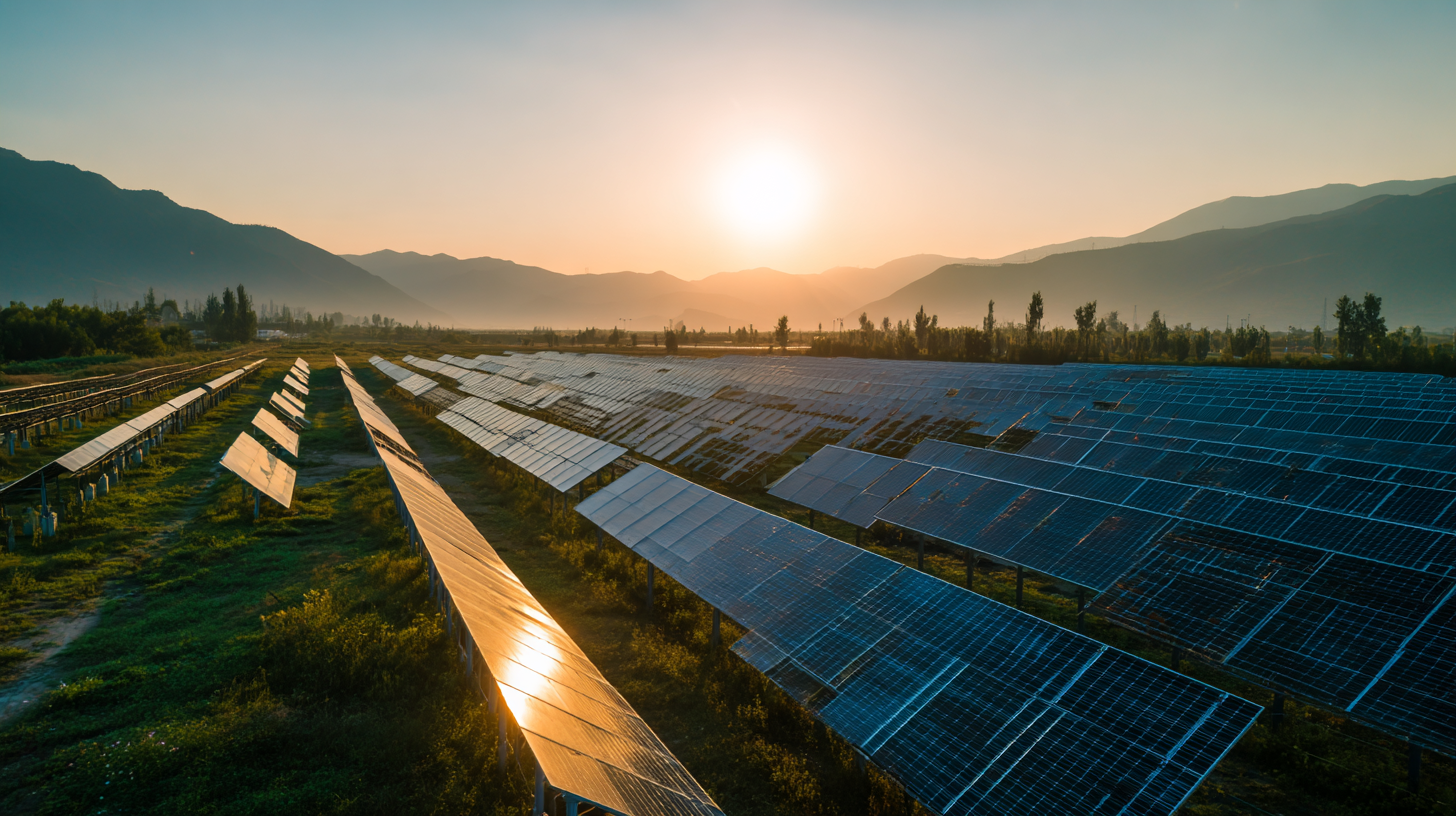
Blog
Top Strategies for Sourcing the Best Green Energy Solutions in a Competitive Market
In today's rapidly evolving energy landscape, the demand for green energy solutions has surged, driven by both environmental concerns and the pursuit of sustainability. According to a recent report from the International Energy Agency (IEA), renewable energy sources accounted for nearly 30% of global electricity generation in 2021, highlighting a significant shift in consumer preferences and regulatory frameworks. As companies face intensifying competition to secure sustainable energy options, understanding the top strategies for sourcing the best green energy solutions is crucial. This ultimate guide will navigate the complexities of acquiring renewable energy, offering insights into market trends, technology advancements, and strategic partnerships that can empower businesses to thrive in this dynamic environment while minimizing their ecological footprint.

Identifying Key Green Energy Trends in Today's Competitive Landscape
In today's competitive landscape, the quest for green energy solutions has intensified, driven by a growing demand for sustainability. Recent analyses highlight that the green hydrogen economy is set for substantial growth, with varying demand trajectories predicted across different countries. This shift presents a lucrative opportunity for businesses to pivot towards greener alternatives and leverage emerging market trends.
**Tip:** When sourcing green energy solutions, maintain awareness of global developments in sectors such as renewables, including solar, wind, and hydropower. Rapid industrialization in Asia underscores the region's crucial role in the transition to a less carbon-intensive energy model, making it essential to track innovations and investment opportunities here.
The 2025 Renewable Energy Industry Outlook points to a significant gap between demand for clean energy and current supply, compelling utilities to explore new technologies and strategies. Invest in understanding emerging technologies and geopolitical factors that influence energy policies.
**Tip:** Engaging with research reports focusing on renewable trends can provide critical insights necessary for informed decision-making. Keeping an eye on environmental regulations will also help businesses navigate the complexities of the energy transition effectively.
Evaluating Supplier Credentials and Certifications for Sustainable Solutions
Evaluating supplier credentials and certifications is crucial when sourcing green energy solutions, especially in a competitive market. First, it's essential to assess the certifications that suppliers hold, as these reflect their commitment to sustainability. Look for certifications from recognized organizations such as the
International Organization for Standardization (ISO), which provides standards for environmental management (ISO 14001) and energy management (ISO 50001). Additionally, certifications like LEED (Leadership in Energy and Environmental Design) indicate that a supplier's practices are aligned with sustainability goals.
Beyond certifications, it's important to scrutinize a supplier’s track record and reputation in the industry. Check for customer testimonials, case studies, and performance metrics that demonstrate their effectiveness in delivering green solutions. Engaging directly with suppliers during the evaluation process can also provide insights into their sustainability initiatives and long-term vision. A supplier committed to transparency and continuous improvement will not only meet current standards but also be proactive in adapting to future challenges in green energy.
Maximizing Cost Efficiency: Balancing Quality and Price in Green Energy Sourcing
In today's competitive market for green energy solutions, achieving cost efficiency while maintaining high-quality standards is essential. As highlighted in recent industry analyses, companies can benefit significantly from advanced supply chain management (SCM) techniques, employing machine learning and deep learning to optimize procurement processes. This not only strengthens supplier relationships but can also lead to substantial cost savings. Organizations focusing on sustainable practices can reduce operational costs by leveraging reclaimed or new construction materials, adapting a circular economy approach that enhances resource efficiency and minimizes waste.
Tip: When sourcing green energy solutions, conduct a thorough analysis of both new and reclaimed materials to evaluate their long-term value and sustainability benefits.
Furthermore, the integration of hybrid renewable energy systems, particularly those combining solar and wind technologies, provides unique opportunities to decrease reliance on traditional energy sources. However, companies must be mindful of the intermittency associated with these renewable sources, as seen in studies examining energy utilization in green ammonia production. To maximize cost efficiency, firms should develop a robust strategy that includes energy storage solutions to buffer against potential disruptions in supply.
Tip: Implement energy storage technologies as part of your sourcing strategy to ensure a steady energy supply and optimize resource use, thereby enhancing overall cost efficiency.
Leveraging Technology: Smart Solutions for Sustainable Energy Procurement
In today's competitive market for green energy solutions, leveraging technology has become paramount for organizations aiming to optimize their sustainability initiatives. The incorporation of advanced technologies such as artificial intelligence (AI) and automation is transforming how companies source renewable energy. According to the 2025 Renewable Energy Industry Outlook, the demand for renewable energy is expected to surge significantly, driven by both environmental concerns and advancements in technology.

To effectively navigate this shifting landscape, manufacturers and energy providers should consider adopting smart solutions for sustainable energy procurement. AI-powered platforms can analyze vast amounts of data to predict energy trends and optimize the procurement process. For instance, the use of K-means clustering algorithms in energy management allows for efficient scheduling in grid-connected microgrids, enhancing overall energy efficiency and sustainability.
Tips:
- Invest in data analytics tools that provide real-time insights into energy usage and renewables pricing.
- Explore automation solutions that streamline the procurement process while ensuring compliance with sustainability goals.
- Collaborate with tech innovators to stay ahead in the renewable energy space, ensuring that your practices align with emerging standards and consumer expectations.
Building Strategic Partnerships for Long-Term Success in Green Energy Sourcing
 Building strong strategic partnerships is essential for achieving long-term success in green energy sourcing. According to the International Renewable Energy Agency (IRENA), global renewable energy capacity reached 2,799 GW in 2020, which underscores the competitive nature of the market. By collaborating with key stakeholders, such as technology providers, local governments, and non-profit organizations, companies can create synergies that enhance their sourcing strategies. For example, partnerships can facilitate access to cutting-edge technologies and insights that can improve efficiency and reduce costs.
Building strong strategic partnerships is essential for achieving long-term success in green energy sourcing. According to the International Renewable Energy Agency (IRENA), global renewable energy capacity reached 2,799 GW in 2020, which underscores the competitive nature of the market. By collaborating with key stakeholders, such as technology providers, local governments, and non-profit organizations, companies can create synergies that enhance their sourcing strategies. For example, partnerships can facilitate access to cutting-edge technologies and insights that can improve efficiency and reduce costs.
Tip: When seeking partnerships, look for organizations that share your sustainability values and have complementary strengths. This can lead to more innovative solutions and increased credibility in the market.
Moreover, developing long-term relationships with suppliers can lead to favorable negotiation positions and the ability to secure renewable energy at stable prices. According to a report by McKinsey, companies that engage in integrated sourcing strategies can reduce their overall supply chain risks significantly. By establishing contracts that prioritize sustainability, businesses can enhance their reputation and customer loyalty.
Tip: Schedule regular reviews with partners and suppliers to assess performance and alignment with core sustainability goals. This will ensure that both parties are working towards common objectives, ultimately benefiting the green energy landscape.